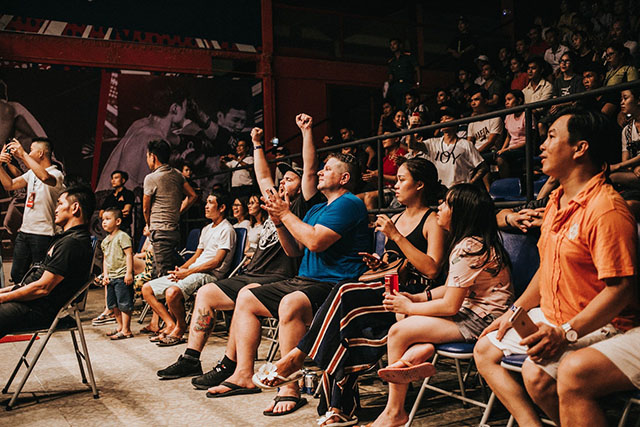 Membership TodaySign Up Now
Membership TodaySign Up NowVideo Transcript
Three components of every YouTube ad
Justin Sardi: When it comes to running profitable YouTube Ad campaigns, AdCreative is king. Today, I’m going to break down how we’re getting five different ads to split test using essentially one video ad script. Let’s break that all down. I’m going to show you the three key components of every single YouTube ad, and then how to take one script and turn it into five different videos. Let’s dive in. Now, the first thing that I like to do when it comes to scripting YouTube Ads is I sit down and I come up with what is actually the most important part of a YouTube Ad, and that is the hook. I’ll sit down and I will literally map out five different YouTube Ad hooks.
Now, we have a guide that I’ll give you absolutely free, link will be in the comments or somewhere in our bio, or if you just leave a comment saying, “Hey, send me the guide,” we can let you know where to go. But we have a guide with all of our top hooks. I like to sit down and map out five unique hooks. Now, when it comes to ads that are successful versus ads that are not successful, and successful I’m talking about ads that actually take off and scale versus ads that maybe you test and didn’t have a good click-through rate or they just don’t resonate with the audience, it can usually be dialed in or narrowed down to a good or a bad hook, which is why I like to get five different hooks.
I sit down, I map out five different hooks. One of them might be a curiosity hook. One might start off by saying some crazy unbelievable statement. One might be me with a weird prop just talking to the prop, something along those lines. I like to study what’s working in different niches, see what’s going on, come up with new ideas for new hooks, and then take those and apply them to my market. Competitive intelligence and just overall market research is a great tool to use here. Then we get to the body. The body of the ad is essentially the education part.

The Body
If you start off with a hook, hey, I’m going to show you how so-and-so got this result in this many days using this simple system, that is where you start to describe the system. Hey, this system has three components. It’s got a hook, a body, and a call to action. And that’s the final part of your ad. You always want to let somebody know exactly what action you want them to take and what’s going to happen after they take that action. If you’re running an ad for a webinar or something like that, you would then say, “Hey, I want to show you how so-and-so got this result using our methods, a little bit about the methods, and by the way, we’re offering a free training showing you exactly how to do the same. Go ahead and click the link on this video now. Go to register,” something along those lines.
It works extremely well. There’s three components of this, and essentially what we do is the body and the call to action. I usually like to keep the same, right? It’s usually pretty similar. And then what we’ll do is we’ll shoot this in one chunk, and then we’ll sit down and we’ll shoot hook one, two, three, four, and five. And then when it comes to editing time, we just bolt those hooks onto the second part of the ad. And that’s usually where I like to start when it comes to split testing. Because honestly, we have found the hook makes the biggest difference. Now, split testing your body, definitely a good thing to do.
Maybe not your body, but the body of your ad. Not a bad thing to do, but honestly, the most important thing when it comes to these ads is the hook, because somebody has five seconds to skip. Now, speaking of five seconds and time, a typical hook is going to be somewhere between five and 20 seconds. I like to make my hook somewhere between five and 20 seconds. If you can do that, really capture somebody’s attention, transition that into the body. Typically, a video ad should be somewhere between a minute and I’d say max three minutes if you’re doing an in-stream ad. The body would be somewhere between one to two minutes-ish is usually what we find the sweet spot is.

The Call to Action
Honestly, the call to action, 30 seconds to one minute or something like that, and really extending that call to action is a good move as well. Because if you have a really compelling ad, you’ve done a good job with your hook, your body’s entertaining, a lot of people will just watch that. And then at the end, you want to give them time to be able to actually click on that video ad. YouTube actually has a cool thing at the end where they have a little countdown timer. It’s a little thing and it’s like, here you can click the link, all that good stuff. And then there’s also the companion banner in the top right of these in-stream ads.
I say this is the general format. Your first five to 20 seconds, maybe even 30 seconds is your hook. One to two minutes is the body. And then 30 seconds to a minute of call to action. Sometimes I’ll even throw a call to action right after the hook. It seems to work really well if you’re saying, “Hey, I want to show you how so-and-so was able to do this,” blah, blah, blah. Before you even get to the education or the part where you’re explaining everything in the ad, you can say something like, “I’m going to show you how so-and-so was able to get this result in this amount of time, and I’m going to do it on a free live training. All you have to do is click the link on the video to learn more.”
You can throw that call to action up here, which is usually what I tend to do as well, not as necessary anymore. And then one thing I will say in your hook is you want to pre-qualify your viewer. Especially with the way that Google is taking over the targeting a little more, allowing their AI and their data to put your ads in front of the right people, it’s more important than ever to really pre-qualify the right people in the hook. Call out your ideal audience. If you’re looking for businesses that are doing at least a million dollars a year, call that out. Hey, if your business does at least a million dollars a year, listen up because I’ve got, whatever.

Train your Pixel
Pre-qualify those people, because you don’t want the wrong leads coming in. Really those conversions are going to be firing. You’re going to be training your Pixel. It’s better to train your Pixel in a way that gets the right people as opposed to everybody in cheaper conversions. Trust me, it’s better to pay a little bit more for a conversion that has the right people. Because then a little bit down the line, when it comes time to scale, Google’s going to have much better data about what type of customers you want, and you’ll be able to scale to the moon with the correct type of customers.
That’s how we’re basically taking one video script turning into five different videos, and I will be making another video on exactly how we are structuring our campaigns, because you’re going to have five different ads, how exactly do you want to structure your campaign and go from there. We have another video for that. Stay tuned to that and keep an eye up. That’s it for me on this one. Bye for now.
 Membership TodaySign Up Now
Membership TodaySign Up Now


Comments are closed.